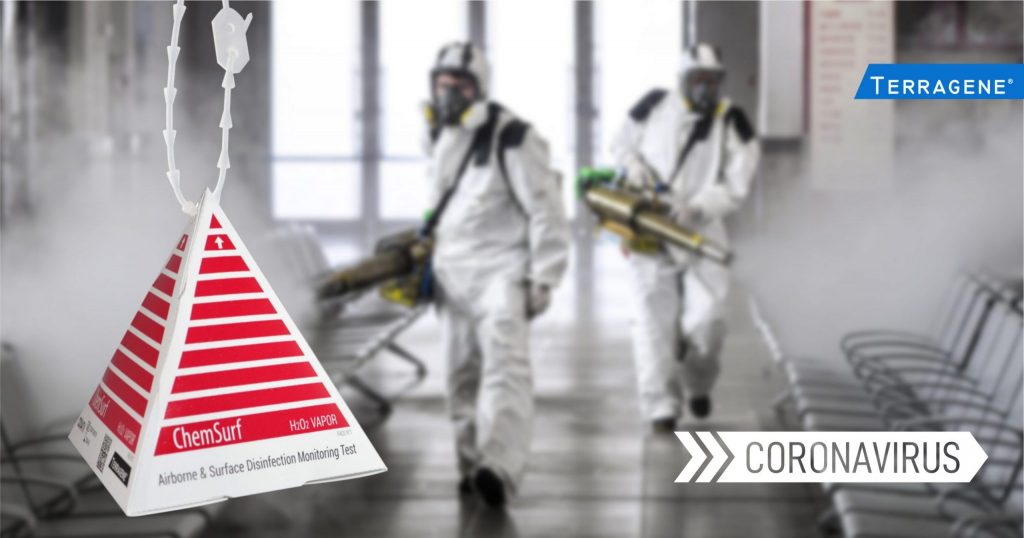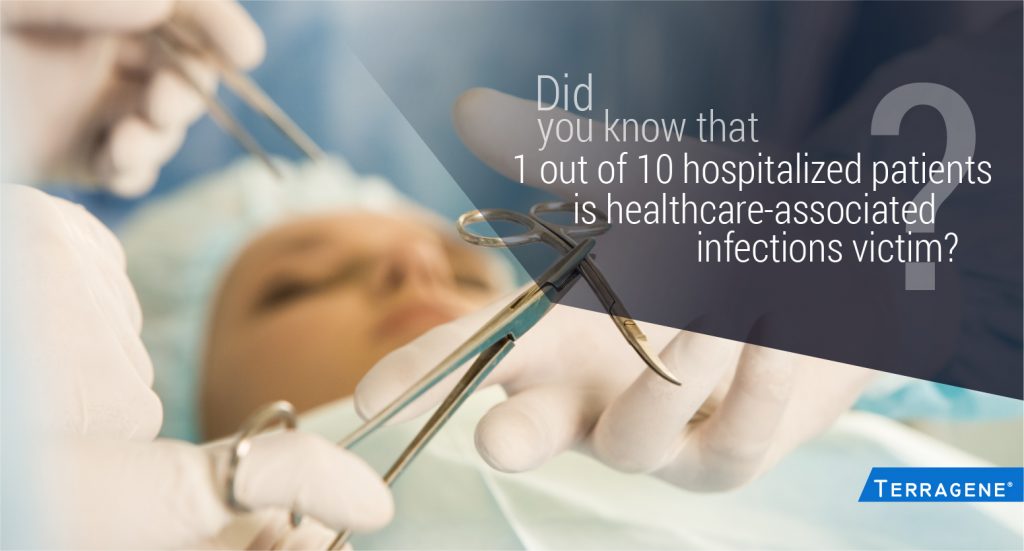TerraBlog

2019-NCOV #CORONAVIRUS: WHAT IS AND HOW TO PREVENT IT
Coronavirus refers to a wide family of viruses some of which affect humans and cause a great variety of illness. 2019-nCoV is a new strain of coronavirus first identified in Wuhan (China) in the year 2019. The symptoms of virus infections range from mild to severe and ocasionally could be fatal. Older people, and those with pre-existing medical conditions are more prone to become severely ill due to Coronavirus infection [1].
2019-nCov can be transmitted from person to person after close contact with an infected patient. The spread is primarily through respiratory droplets generated when a person coughs, sneezes, or through saliva droplets or nose discharge.
Prevention is the first barrier to avoid the spreading of the virus. Washing hands frequently, practice respiratory hygiene, maintain at least 1 meter between individuals, avoid touching eyes, nose and mouth; are effective personal measures. Room disinfection is also an important prevention action and hydrogen peroxide has long been used as a disinfectant against viruses, yeasts and bacterial spores. Assuring a proper disinfection process is thus essential [2-4].
At Terragene® we have developed a family of products to assess the efficiency of airborne & surface disinfection through hydrogen peroxide (H2O2). The line is composed of two different Chemical Indicators (ChemSurf: Aerosol and Vapor) and a Biological Indicator (BioSurf). ChemSurf allows the correct monitoring of all critical parameters of the process: time, temperature and H2O2 concentration. Its special 3D design concedes the possibility to evaluate the disinfection process in surfaces with different spatial dispositions. BioSurf is the first fluorescence-based super rapid biological indicator in the market and is fully compatible with all Bionova® Fluorescence Automatic Readers and Bionova® Traceability Software.
References:
[1] World Health Organization (WHO) https://www.who.int/news-room/q-a-detail/q-a-coronaviruses
[2] Andersen, B. M., Rasch, M., Hochlin, K., Jensen, F. H., Wismar, P., & Fredriksen, J. E. (2006). Decontamination of rooms, medical equipment and ambulances using an aerosol of hydrogen peroxide disinfectant. Journal of Hospital Infection, 62(2), 149-155.
[3] Pottage, T., Richardson, C., Parks, S., Walker, J. T., & Bennett, A. M. (2010). Evaluation of hydrogen peroxide gaseous disinfection systems to decontaminate viruses. Journal of Hospital Infection, 74(1), 55-61.
[4] Heckert, R. A., Best, M., Jordan, L. T., Dulac, G. C., Eddington, D. L., & Sterritt, W. G. (1997). Efficacy of vaporized hydrogen peroxide against exotic animal viruses. Appl. Environ. Microbiol., 63(10), 3916-3918.

DID YOU KNOW THAT 1 OUT OF 10 HOSPITALIZED PATIENTS AROUND THE WORLD IS HEALTHCARE-ASSOCIATED INFECTIONS VICTIM?
Health care-associated infections (HCAIs) are infections that patients acquire while receiving treatment for medical or surgical conditions and are the most frequent adverse event during care delivery. Its impact can result in prolonged hospital stays, long-term disability, increased resistance of microorganisms to antimicrobial agents, a massive additional financial burden for the health system, high costs for patients and their families, and excess deaths. Every year millions of people are threatened by these diseases.
By implementing the correct control of the process of washing, disinfecting and sterilizing instruments it can avoid this global problem. Terragene develops and markets the broadest range of indicators to monitor these processes and there by improve patient safety.
Reference: World Health Organization www.who.int/infection-prevention/en/
Learn more in the following link: www.terragene.com.ar/en/products/infection-control

